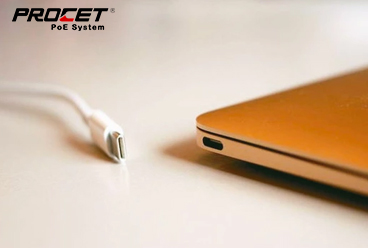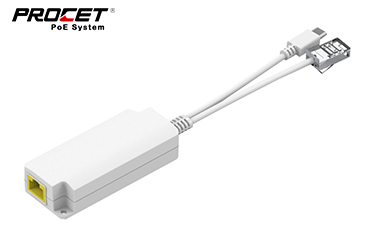Home >> News >> Product News
Looking back over the past 20 years, one of the most troublesome things for consumers with 3C products of multiple brands is a pile of charging lines of different specifications. When the Internet rose in 2000, Nokia, Motorola and Sony mobile phone brands were in contention, but the charging cables could not work with each other. In order to connect 3C products such as computers and mobile phones, Microsoft and Intel launched the USB (Universal Serial Bus) developer forum, which set the USB standard in 2001.
With the rise of USB specification, Mini USB has evolved all the way to Micro USB. In 2009, major brand manufacturers followed up with the Global Mobile Communication Alliance Association and supported its adoption. In August 2014, they launched a new connector Type-C, which has no pros and cons, and won more market praise.
The European Union (EU) officially made a decision on June 7, and passed a resolution stipulating that before the autumn of 2024, small and medium-sized electronic devices such as smart phones, tablet computers, digital cameras, headphones, game consoles, e-book readers and so on must be sold in EU countries, and the connector of the charger must be changed to USB Type-C; In addition, due to different charging characteristics, charging ports and notebook computer products with more complex power models, manufacturers must have a longer time to prepare universal charging solutions. Therefore, when the regulations come into force, there will be an additional 40 month buffer period to adjust the relevant packages. The EU's move means that the long-standing debate over charging specifications has officially ended, and USB Type-C will become the universal charging connector for EU electronic products.
The product is gradually converted to Type-C
According to the press release of the European Parliament, EU consumers spend more than 250 million euros every year on purchasing wire rods and chargers. In this process, it is estimated that more than 10000 tons of electronic waste will be generated every year, including discarded and unused chargers. In fact, in order to reduce the generation of unnecessary electronic waste, enable consumers to charge multiple electronic products through the same charging device, and further improve the inconvenience caused by the disorder of electronic device charger specifications, the EU has been actively promoting the formulation of regulations on universal charger specifications for multiple electronic products more than a decade ago. Up to now, the common charging port specifications on the market have been reduced from more than 30 to the current three common specifications, including USB micro-B, USB Type-C and Lightning. Judging from the market share of the three types of chargers, the EU and research institutions show that about 50% of the chargers attached to mobile phones on the market are USB micro-B. Among smart phone brands not affiliated with Apple, the charger interface has been gradually converted to USB Type-C, accounting for about 29% of the market. Apple mobile phones are still dominated by Lightning interfaces, accounting for 21% of the global market.

The adoption of the EU bill means that all electronic products sold in the EU must fully adopt Type-C interface in the future. Under the general trend of Type-C unification, the Type-C specification will cover all kinds of products by then, and it is bound to accelerate Apple to make major changes to the interface of charging holes. Guo Ming, the strongest Apple analyst on the surface, has predicted that Apple will abandon the Lightning interface and use Type-C in the second half of 2013; Bloomberg also pointed out that Apple has begun to test the iPhone with USB Type-C transmission port to comply with EU regulations.
The occupancy of Type-C city is expected to increase significantly

Once Apple iPhone officially introduces USB Type-C interface, based on iPhone's market share of about 18% in 2001, the number of Type-C required by iPhone alone will not be underestimated. At that time, the market scale will usher in a period of rapid growth, which will greatly increase the market share of USB Type-C
Although Apple is one of the initiators of the USB Developer Forum, it has chosen its own way. In 2007, it first introduced a 30 pin (commonly known as a pin) connection cable, and in 2012, it changed its name to "Lightning" by 8 pins. After Type-C was widely adopted, Apple did not use Type-C for the charging port and USB port of the ultra-thin Macbook air until 2016. Later, Type-C became the standard configuration of Apple NB products such as Macbook, Macbook Pro, and only iPhone still insisted on using Lightning.
However, in 2019, there will be a big change in the market. Microsoft's Surface Pro 7, Amazon's Kindle Fire HD 10, and Sony's latest game console, Play Station 5, all three brands' three products have a new intersection, that is, Type-C is imported synchronously, making the global standard charger specifications more unified.
More importantly, in order to reduce the demand for e-waste and environmental protection, the EU and China directly legislate to promote Type-C. On January 10 this year, the Ministry of Industry and Information Technology of the mainland replied in writing to the Proposal on Unifying the Standard Port of Smart Electronic Device Chargers to Further Reduce Electronic Waste Assisting Carbon Neutralization, pointing out that the current smart terminal market has formed a Type-C interface, so vigorously promote charging interface and technology integration, so as to reduce electronic waste and improve resource utilization efficiency.
On April 21, the European Parliament announced that the Internal Market and Consumer Protection Committee (IMCO) voted 43 in favor of 2 against, and by supporting electronic devices, including laptops, tablets, mobile phones, e-readers, smart watches, Bluetooth speakers, etc., the draft Type-C specification was unified. According to the research of the European Commission, the EU will sell about 420 million mobile phones and electronic devices in 2020. Most users have three charging lines, but only two of them will be used.
As Type-C will unify the world, especially the market share of Apple's iPhone is about 20%. Once it is officially introduced, the future market cannot be underestimated for the number of Type-C phones required. Therefore, Guo Mingxuan pointed out in his report that "for relevant supply chains, relevant suppliers will become the focus of the market in the next two years."